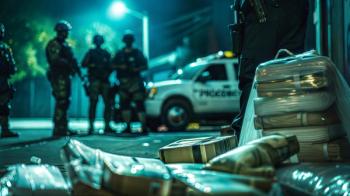
Automated Method for Background Estimation in Laser Spectroscopy
A novel automated method for spectral background estimation in laser spectroscopy promises accuracy and minimal human intervention for quantitative analysis.
When using laser-induced breakdown spectroscopy (LIBS) in spectral analysis, scientists can encounter various hurdles. The most common challenges scientist face while conducting elemental analysis are optimizing the interactions between the laser and the samples, making note of the variations in laser energy, and the converging of the environmental noise that helps to create diverse backgrounds within acquired spectra. All these hurdles can significantly impact the analysis.
In a recent study published in Spectrochimica Acta Part B: Atomic Spectroscopy, a research team from Jiangnan University introduced a novel LIBS method aimed at automating the estimation and removal of varied spectral backgrounds (1). Led by Hao Chen, who works in the School of Mechanical Engineering at Jiangnan University, the researchers proposed an approach that leverages window functions, differentiation concepts, and a piecewise cubic Hermite interpolating polynomial (Pchip) (1).
In this experiment, Chen and his team conducted a series of simulated experiments to evaluate the background correction methodologies. They discovered that their proposed method performed better than existing techniques such as asymmetric least squares (ALS) and model-free background correction (1). By leveraging window functions, Pchip, and differentiation concepts, the new method improved on removing white noise and baseline distortions, achieving a better signal-to-background ratio (SBR) than the previous methods (1). The research team also discovered that their method improved on the handling of background baseline jumps.
The researchers applied their method to seven different aluminum alloys and observed a correlation between spectral intensity and the concentration of magnesium (Mg) (1).
Notably, in experiments measuring Mg concentration in aluminum alloys, the correlation coefficients between the predicted and actual concentrations underwent a dramatic improvement post-correction (1). While ALS and Model-free methods yielded coefficients of 0.9913 and 0.9926, respectively, this new method yielded a coefficient of 0.9943 from an initial 0.9154 (1).
The findings not only validate the efficacy of this automated methodology, but they also open avenues for the advancement of spectral analysis accuracy in LIBS for future research.
This article was written with the help of artificial intelligence and has been edited to ensure accuracy and clarity. You can read more about our
Reference
(1) Chen, H.; Shi, X.; He, Y.; Zhang, W. Automatic background correction method for laser-induced breakdown spectroscopy. Spectrochimica Acta Part B: At. Spectrosc. 2023, 208, 106763. DOI:
Newsletter
Get essential updates on the latest spectroscopy technologies, regulatory standards, and best practices—subscribe today to Spectroscopy.





